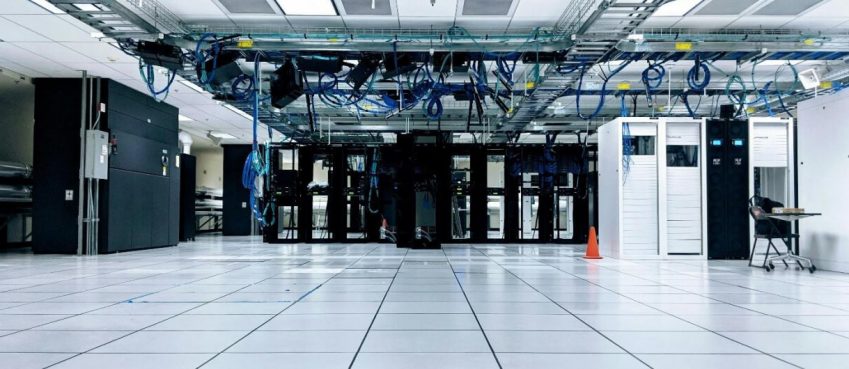
Today’s society views software development as an important industry with room to grow and as a means of enhancing many aspects of human existence. However, cybersecurity became a deciding factor due to the increasing sophistication of software systems and the interdependence of related processes. Network and data security is becoming a fundamental concern and needs to be integrated into the cybersecurity in software development process at every stage. The security of created apps is crucial to any software development company, especially to safeguard data, increase user trust, and adhere to standards.
This blog covers the importance of cybersecurity in modern software development, its impact on processes, current secure software trends, and how Power BI consulting and software development companies help improve cybersecurity. As cyber threats keep advancing, it’s essential to understand and apply proper security measures to create dependable and trustworthy software.
What is Cybersecurity?
The procedure of designing, coding, testing, and deploying applications is as familiar as software development. It has become essential for people and organizations looking for innovative solutions. But as our dependence on software increases, it becomes progressively vital to incorporate substantial cybersecurity protections at every stage of the software development life cycle.
It is censorial to perceive cybersecurity’s scope before discovering the field’s significance in software development. Cybersecurity is the procedure of putting policies in place to preserve networks, software, and computer systems against cyberattacks, illegal access, and other online riskiness. Its target is to guarantee the CIA triad of resources and information availability, confidentiality, and integrity in the digital sphere.
The Rising Importance of Cybersecurity in Software Development
Globalization and the technological age have led to a significant increase in the importance of protecting oneself, other parties, and the assets within computer networks. Additionally, as time goes on and technology advances, cyber threat intelligence and strategies also continue to evolve. Events have the potential to have detrimental effects, negatively impact a company’s finances, harm its reputation, and give rise to legal action. Because of this, having strong cybersecurity is not an alternate feature for a software development company rather, it is a requirement.
Data leaks from ransomware, hacking, and other malevolent activities are more common now. So, it is important to preserve vital data and maintain IT systems secure and dependable. Security is required because of the increase in remote work and cloud service usage in recent years, which has also expanded the attack surface.
As a result, cybersecurity should be used from the very beginning of the project, during the requirement-gathering stage. It’s a proactive approach that helps address potential vulnerabilities before they become serious security problems that are poorly integrated into the project’s overall architecture. To ensure their digital future in the face of constantly evolving threats, organizations can safeguard their resources, maintain customer confidence, and adhere to current regulations by giving cybersecurity top priority.
Also read: Best ecommerce platform in 2021The Evolution of Software Development Practices
Software was traditionally developed with a focus on user-friendliness, performance requirements, and functionality. Security considerations were typically an exception, becoming apparent only during the testing phase. All the same, organizations are now adopting a security-first strategy as a result of the development in cyber risks and threats. The consequence of incorporating security features from the beginning of application development is highly valued in modern software development methodologies.
Secure Software Development Lifecycle (SDLC)
The Secure SDLC, or Secure Software Development Life Cycle, is a prescript that adds security to every step of the software development process. Software development companies can preferably handle security risks by adding security assessments to every step of the software development process. This approach helps them create more secure software overall. The following phases are usually included in the Secure SDLC.
- Requirements Gathering and Analysis: It is vital to determine and record both functional and non-functional security needs during this condition. The security arrangements of the organization’s risk management plan must also align with regulatory and compliance issues.
- Design: Security architects collaborate with developers to create a secure architecture during the design stage. This entails determining the security precautions to take, the hazards that need to be addressed, and the addition of security basics like user rights and layered security.
- Implementation: Another crucial period for applying secure coding techniques is the implementation phase. Developers should follow coding standards and standards when coding programs in order to capture general permeability for instance buffer overflows, SQL injection, and cross-site scripting (XSS).
- Testing: The intention of security testing is to estimate known vulnerabilities and either fix them or lessen their impression. These include security code reviews, penetration tests, and static and dynamic forms of analysis. To get the best possible testbase coverage, a combination of automated and manual testing methods are employed.
- Deployment: Information security and system hardening are terms used to describe steps taken to strengthen servers, networks, and applications by minimizing their points of vulnerability. This includes applying patches that strengthen the systems, solidifying configurations, and establishing user privileges.
The Role of Power BI Consulting in Cybersecurity
Application software is not the only software development project that benefits from incorporating cybersecurity. Strong security measures also need to be implemented for tools like Power BI. Power BI consulting services are essential in this regard because reports and visualizations almost always deal with sensitive data and must adhere to certain regulations.
When it comes to data storage and transfer between users and Power BI services—all while making sure that the organization’s policies are adhered to—Power BI consultants are security experts. They also assist in extending Power BI to security schemes already in place within the company to enhance methods and techniques for conducting safe and equitable data analysis. Thus, business organizations can easily analyze large amounts of data with the help of Power BI consulting services, all while making sure that their systems are as safe as possible to comply with regulatory requirements.
Best Practices for Secure Software Development
The following best practices should be adhered to in order to successfully integrate security into modern development processes. As a result of these practices, security sentience grows among individuals and is unified in the process of development.
- Security Training and Awareness: Everyone implicated in the development process, like developers, testers, and clients, should be conscious of security problems. This is a process for educating staff members and conducting lectures, seminars, and workshops to confirm that workers within an organization are cognoscente of security protocols and how to stop intimidation.
- Threat Modeling: Threat modeling involves identifying and evaluating potential threats and vulnerabilities during the software design phase. Developers can implement appropriate safeguards by knowing the specific attack vectors and the people or things that are likely to pose a threat to a project.
- Secure Coding Standards: We should implement secure coding standards and guidelines for the following reasons: The majority of these vulnerabilities are preventable. It is necessary to locate and encrypt this input and output data in order to follow correct coding procedures and shield the organization from vulnerability.
- Automated Security Testing: The Software Development process can incorporate security testing tools to identify security vulnerabilities in the proposed application early on. Tools for dependency scanning, static and dynamic analysis, and ongoing source and binary analysis provide developers with feedback that can be addressed.
- Secure Deployment Practices: Protective deployments on servers, networks, and applications were mandated by high availability measures. This relates to things like configuring systems for enhanced security and installing security patches.
Consequences Of Neglecting Cybersecurity Measures
If reasonable cybersecurity estimates are not implemented, both organizations and individuals can face grievous consequences.
- Data Breaches: The enhanced risk of data breaches is one of the most important outgrowths. Businesses that neglect cybersecurity risk being the target of cyberattacks that reveal, steal, or allow illegitimate access to susceptive data. Financial losses, reputational damage, and legal divarication can result from data violations.
- Financial Loss: Cybersecurity incidents have the believable to reason individuals and organizations to suffer significant financial consequences. Investigating the occurrence, restoring systems, and taking care of any legal or regulatory responsibilities are all part of protecting from a cyberattack. A security infraction may result in financial penalties, legal action, and lost business eventuality for organizations.
- Reputational Damage: A cybersecurity violation has the believable to seriously damage an organization’s goodwill. A company’s capacity to protect sensitive information is seen reproachfully by the public and trust is damaged when customer data is compromised. It takes a lot of time and work to recondition confidence, and doing so may cost you associates, clients, and market share.
- Legal and Regulatory Consequences: Insufficient cybersecurity conventions may lead to non-adherence to occasional legal and regulatory requirements. Data conservancy and privacy laws like GDPR and HIPAA demand organizations take proper security measures. There may be damages, penalties, and legal action brought by impressed parties if non-compliance is not ensued.
- Operational Disruptions: Operations inside an organization can be severely disrupted by cybersecurity incidents. Successful cyberattacks have the believable to cause system outages, lower productivity, and obstruct vital business operations. An organization’s competence to provide customer service, order fulfillment, and business continuousness is all negatively impacted by these disruptions.
Conclusion
A critical decomposing of software development is cybersecurity, which constrains knowledge, expertise, and focus from developers. Developers can intercept data breaches, protect financial assets, improve user trust, and guarantee conformity with security regulations by putting best cybersecurity practices into practice. These practices comprise regular security evaluations, code reviews, encryption protocols, adhering to industry standards, and utilizing proactive threat intelligence.
Software developers should keep learning new security concepts and techniques. They should stay contemporized with the latest security trends, join security communities, and search for advice from security experts because the field of cybersecurity in software development is incessantly changing. It is obligatory that we continue to be dynamic in raising security awareness. Vofox is a reputable partner in the field of cybersecurity services. We are a great option for businesses looking to strengthen their software development against changing threats because of our dedication to providing strong cybersecurity solutions.
FAQs
Why is cybersecurity important while developing a software?
Cybersecurity is important to conservancy apps from perfidious attacks, data breaches, and unauthorized access. Durable security protocols are integrated to mitigate risks and safeguard confidential information.
What software development services do you offer?
We proposal a range of services, accompanied custom software development, website and mobile app development. Our services also cover software conservation and support, UI/UX design, and quality convincement testing.
How do you ensure the security of the software developed by your team?
Security is our top priority. Strong security estimates are implemented everywhere the development process, and industry best exercises are ensued. This comprises safe coding practices, regular security assessments, encryption, and compliance with occasional legal requirements.
What role do secure coding guidelines play in developing a software?
Secure coding principles provide best practices that help developers write secure code and decrease common permeabilities. Following to these guidelines detracts the risk of introducing security imperfections into software, hence enhancing overall security posture.
Top 10 News
-
01
Top 10 Deep Learning Multimodal Models & Their Uses
Tuesday August 12, 2025
-
02
10 Google AI Mode Facts That Every SEOs Should Know (And Wha...
Friday July 4, 2025
-
03
Top 10 visionOS 26 Features & Announcement (With Video)
Thursday June 12, 2025
-
04
Top 10 Veo 3 AI Video Generators in 2025 (Compared & Te...
Tuesday June 10, 2025
-
05
Top 10 AI GPUs That Can Increase Work Productivity By 30% (W...
Wednesday May 28, 2025
-
06
[10 BEST] AI Influencer Generator Apps Trending Right Now
Monday March 17, 2025
-
07
The 10 Best Companies Providing Electric Fencing For Busines...
Tuesday March 11, 2025
-
08
Top 10 Social Security Fairness Act Benefits In 2025
Wednesday March 5, 2025
-
09
Top 10 AI Infrastructure Companies In The World
Tuesday February 11, 2025
-
10
What Are Top 10 Blood Thinners To Minimize Heart Disease?
Wednesday January 22, 2025







